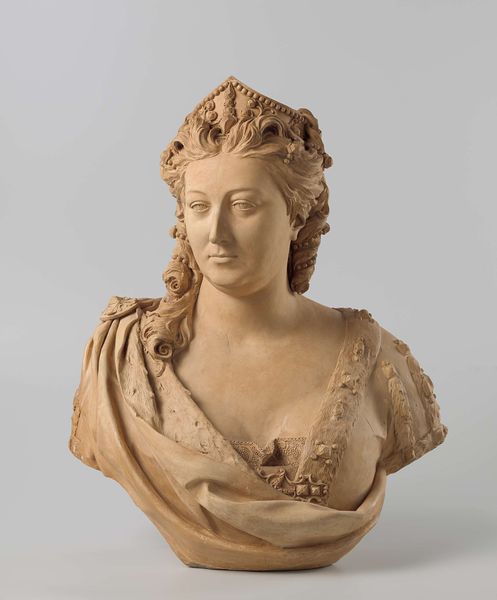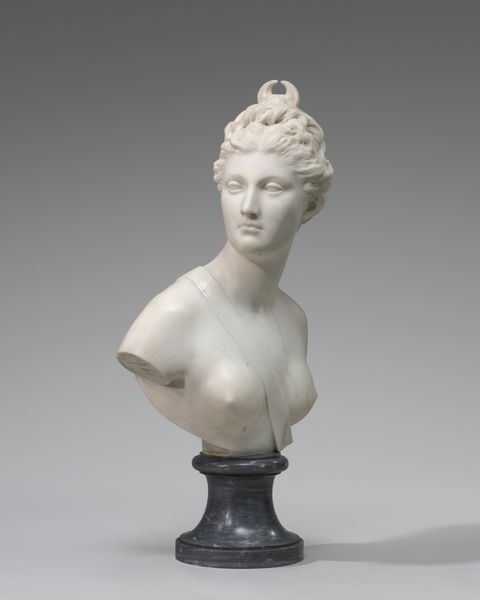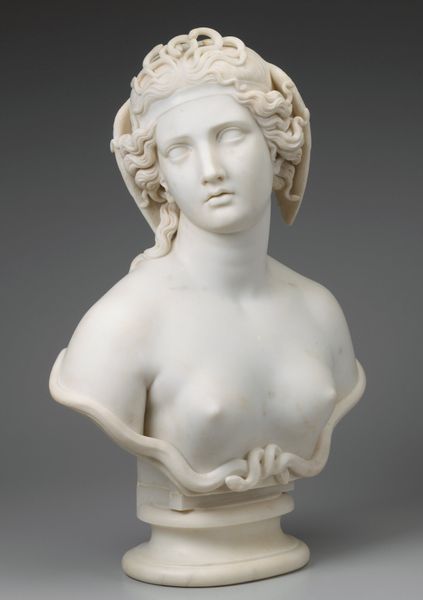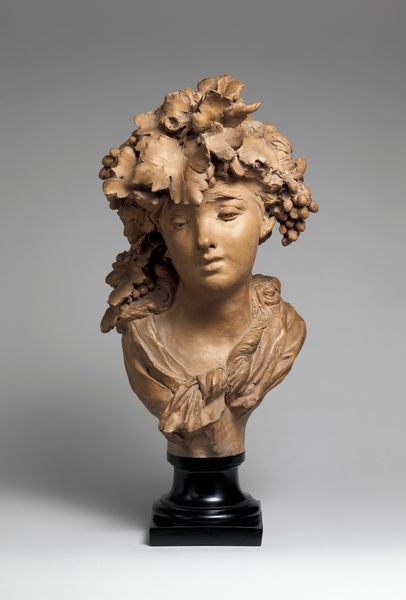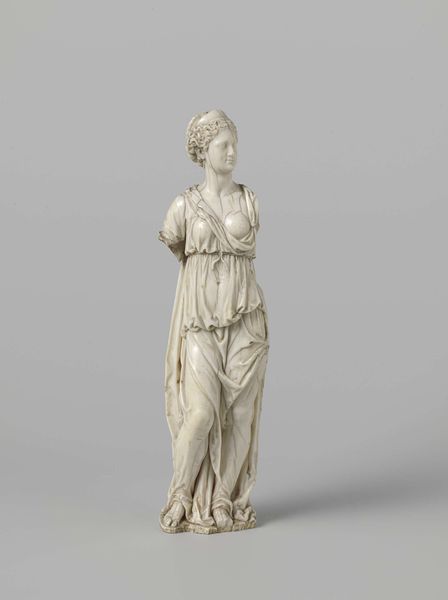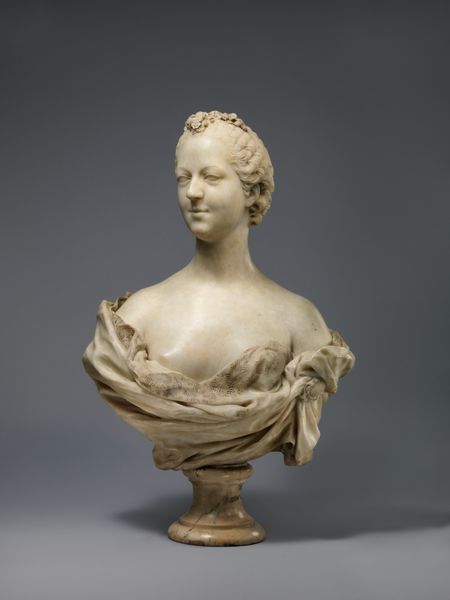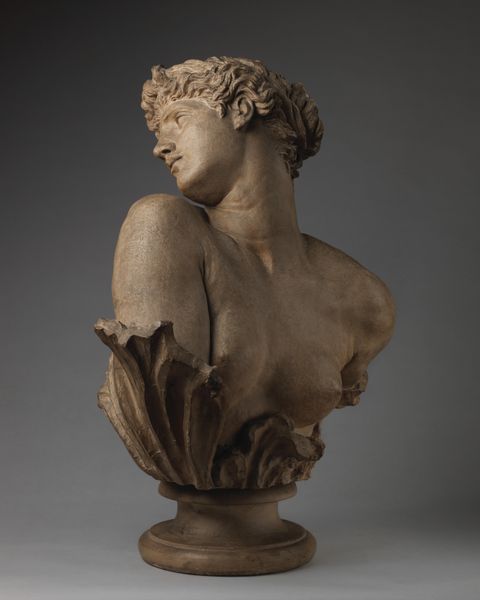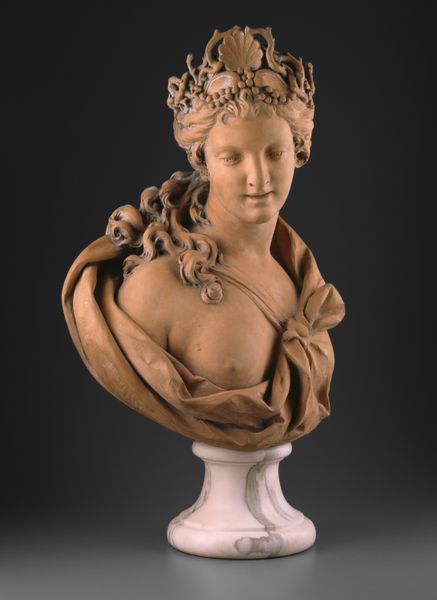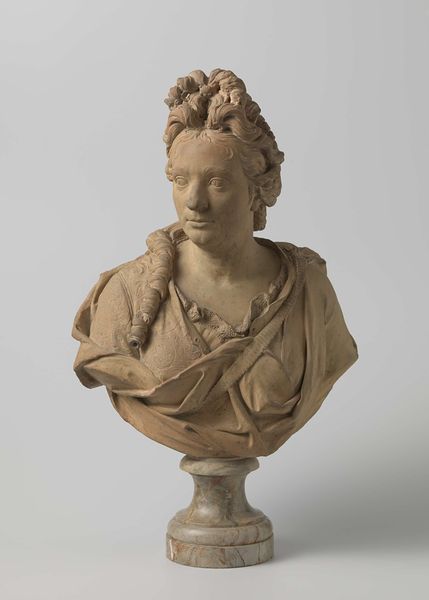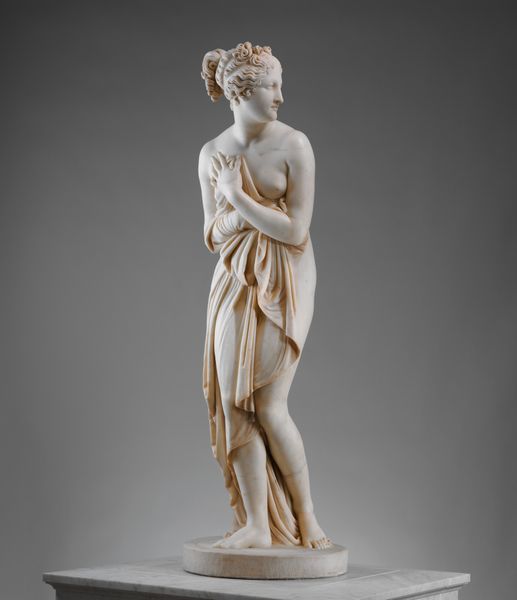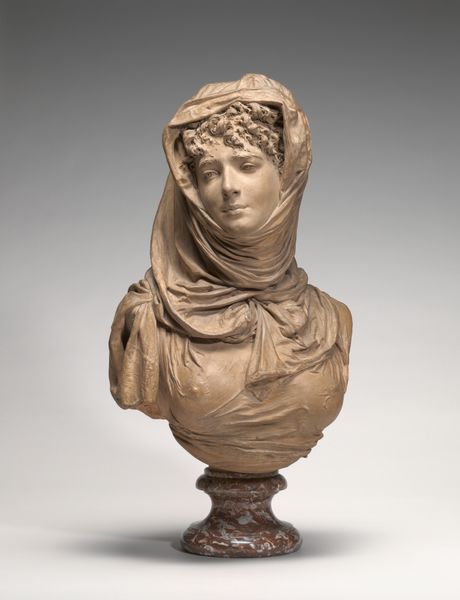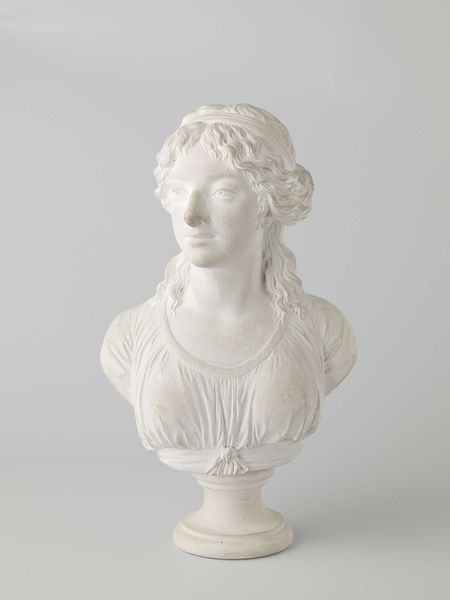
Dimensions: height 26 cm, width 21.1 cm, depth 12.5 cm
Copyright: Rijks Museum: Open Domain
Curator: The "Bust of Amphitrite," dating back to about 1712 and crafted by Anthonie Turck, presents a striking example of neoclassical sculpture rendered in marble. Editor: It's interesting. I'm struck by a sense of guarded melancholy in her expression; almost as though she is aware of her destiny as an object. The texture also creates this effect. It is classical yet so unrefined! Curator: Amphitrite, in Greek mythology, embodies the sea itself. Turck's representation cleverly marries this potent symbolism, with the Neoclassical artistic values of the early 18th century. Think about the visual language that would have immediately resonated at that time. Editor: It’s fascinating how he invokes a kind of hyper-femininity and at the same time silences this feminine power; she is literally cut off at the torso and chest. Consider that during that period in Europe many women lacked agency, confined to restrictive societal roles within a patriarchal power structure. I'm thinking about this power imbalance and the implications for our current moment in history. Curator: Precisely! Amphitrite’s Roman equivalent, Salacia, represents the salty waters. You see artists borrowing from and recasting mythological figures, reshaping narratives with pre-Christian roots in ways that speak to a shifting present and future. The symbols layer on top of each other. The ocean has always been portrayed both as a wellspring of life, and the source of apocalyptic floods that level civilizations. I wonder which one is being conjured in the collective subconscious here. Editor: This bust, while seemingly about mythology, taps into something more profound about feminine presentation. As we observe the interplay between classical forms and its muted execution, and how the historical narrative is presented, perhaps this is calling on us to recognize that art and beauty and meaning can always be found in imperfect situations, just as the sea ebbs and flows, and always carries all life within. Curator: Agreed; the ripples of this interpretation certainly carry on into today. Editor: Absolutely. This could offer insights into both where we come from, and a clearer understanding of where we still need to go in today's culture.
Comments
No comments
Be the first to comment and join the conversation on the ultimate creative platform.
